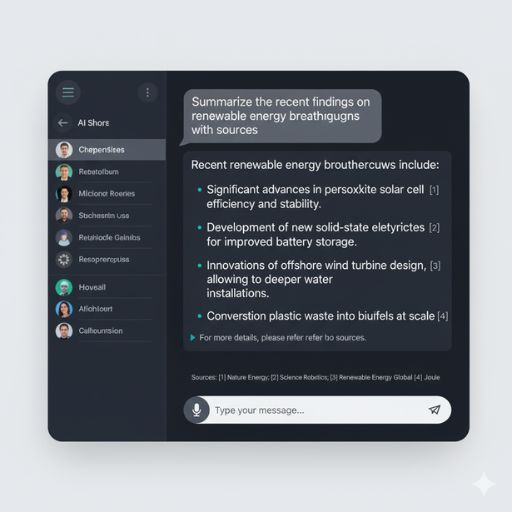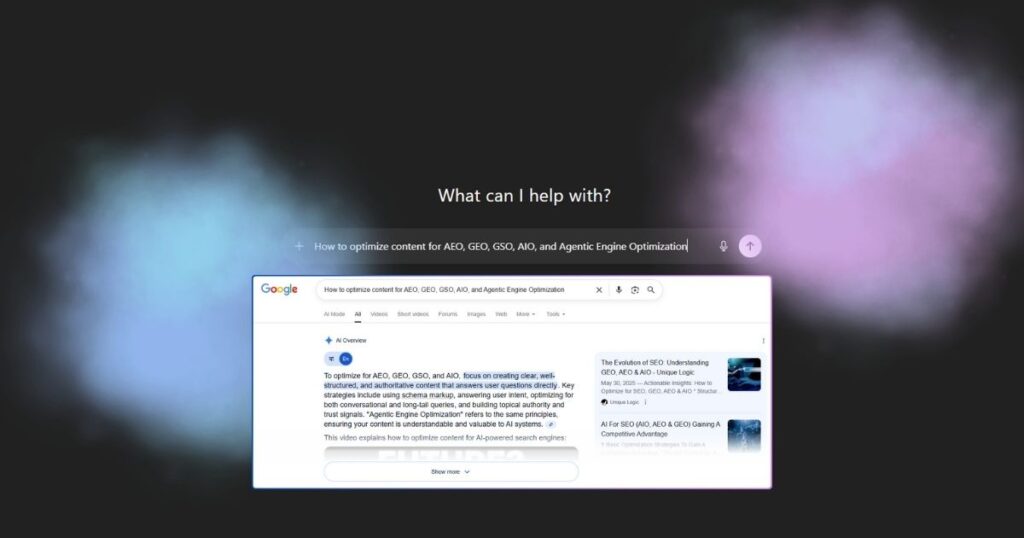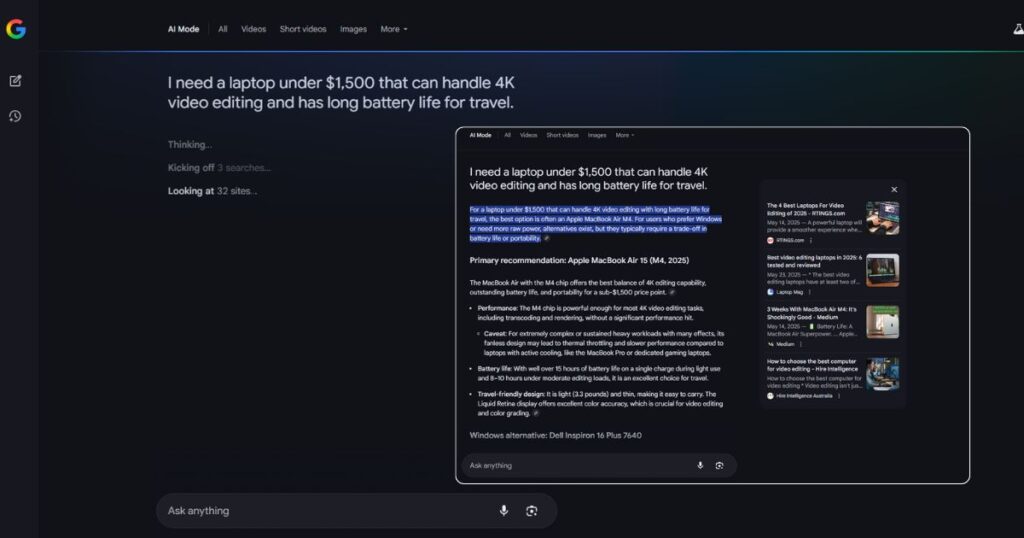Don’t get lost in the alphabet soup of AEO, GEO, GSO, and AIO. The real goal is simple: make content that humans trust and AI can easily use. That’s how you stay visible, even if the rules change tomorrow.
Think back to 2012, when mobile search exploded. Suddenly, websites that weren’t mobile-friendly started losing out, and Google introduced mobile-first indexing. At first, there was confusion – should businesses create separate mobile sites? Responsive design? AMP? A lot of buzzwords came and went.
But the core truth was simple: if your content wasn’t usable on a phone, you lost visibility.
👉 Today, AI optimization is the same kind of shift.
- Just like mobile SEO wasn’t about gimmicks but about usability,
- AI optimization isn’t about chasing acronyms but about making content usable, understandable, and trustworthy for AI systems.
In 2012, mobile optimization was about format. In 2025, AI optimization is about clarity and trust.
Breaking Down the Acronyms AEO, GEO, GSO, and AIO
Here’s what each acronym means, how it works, and how it differs:
1. AEO – Answer Engine Optimization
- Meaning: The practice of optimizing content so that it is selected and shown by answer engines (like Google’s AI-generated results, Bing Copilot, or Perplexity).
- How it works: Instead of ranking for blue links, the focus is on being the source of an answer in AI-powered search results. This means creating concise, factual, context-rich content with structured data that AI can easily pull from.
- Difference: AEO is specifically focused on AI-driven answer boxes or overviews rather than traditional SERPs.

2. GEO – Generative Engine Optimization
- Meaning: A newer term for optimizing content for generative AI systems (like ChatGPT, Gemini, or Claude) that produce answers instead of pointing to webpages.
- How it works: Content is structured, trustworthy, and “AI-friendly” (clear headings, FAQs, citations, schema markup) so that generative engines can reference it.
- Difference: GEO is broader than AEO – it doesn’t only mean Google’s search answers, but any generative AI system.
3. GSO – Generative Search Optimization
- Meaning: Another way of describing optimization for generative AI in search engines.
- How it works: Very similar to GEO, but applied more narrowly to search engines that integrate generative AI (Google, Bing, etc.).
- Difference: GEO = AI systems generally. GSO = AI-powered search specifically. They overlap heavily, but GSO keeps the emphasis on search, not all generative engines.
4. AIO – AI Overviews (Google)
- Meaning: Google’s official feature called AI Overviews, where generative AI creates a summarized answer at the top of search results.
- How it works: When a user searches, Google’s AI pulls together information from multiple sources and displays a single synthesized response, often with citations.
- Difference: Unlike AEO, GEO, or GSO (which are strategies), AIO is a Google product feature.
5. Agentic Engine Optimization (future-facing)
- Meaning: An emerging idea that optimization may shift toward AI agents (like AutoGPT, ChatGPT agents, or Google’s planned AI assistants) that don’t just answer but act – booking, buying, comparing.
- How it works: Content must be structured so that autonomous AI agents can interpret it and take action on behalf of users (e.g., booking a flight, purchasing a product).
- Difference: Goes beyond just providing answers → it’s about making content actionable for autonomous AI agents.

✅ Quick Comparison:
- AEO → Focused on answers in search (answer boxes, AI snippets).
- GEO → Broader, optimization for any generative AI engine.
- GSO → A narrower slice of GEO, focusing on search engines with generative AI.
- AIO → A Google feature (not a strategy).
- Agentic Engine Optimization → The next stage, preparing for AI agents that act, not just answer.
The Real Problems With AEO, GEO, GSO, and AIO
You are fueling the AI engines with your content, but not always rewarded.
1. No Standard Definition (Confusion & Buzzword Overload)
- Different people use AEO, GEO, and GSO to mean almost the same thing.
- Agencies invent new acronyms to sound innovative, but it confuses businesses: “Which one should I focus on?”
- Reality: they all boil down to making content usable by AI systems.
2. Lack of Transparency in AI Systems
- With SEO, you at least know ranking factors (keywords, backlinks, speed, etc.).
- With generative AI, nobody knows exactly how answers are chosen.
- This makes optimization guesswork – you don’t know if your content will be cited, ignored, or rewritten without credit.
3. Risk of Lost Traffic
- AI Overviews (AIO) and answer engines often give complete answers without clicks.
- That means even if your content powers the AI’s response, users may never visit your site.
- Businesses face the paradox: You’re fueling the engine, but not always rewarded.
4. Credit & Attribution Issues
- AI tools sometimes paraphrase without linking back.
- This raises concerns: Will publishers lose visibility? Will small sites get drowned out while AI only cites “trusted” big brands?
5. Constantly Moving Target
- Google, Bing, OpenAI, and others are changing features weekly.
- Today’s “best practice” for AEO or GEO could be obsolete tomorrow.
- It’s much harder to build a stable long-term strategy compared to traditional SEO.
6. Quality & Trust Concerns
- AI can “hallucinate” (make things up), which means businesses risk being misrepresented.
- Even if your content is accurate, AI might mix it with less reliable sources.
- This undermines trust between publishers, search engines, and users.
7. Monetization Uncertainty
- In traditional SEO, traffic → ads, sales, subscriptions.
- In AI-driven results, if users don’t click through, how do you monetize your expertise?
- The business model for AEO/GEO is still unclear.
✅ In plain English:
- These acronyms are attempts to name a moving target.
- Right now, the “optimization” playbook is incomplete because AI search doesn’t work like traditional SEO.
- The risk is businesses waste money chasing buzzwords instead of focusing on what really matters: clear, authoritative, structured content that builds trust – with or without AI.
What to Do Instead to Embrace the Shift of AEO, GEO, GSO, and AIO?
Even though acronyms like AEO, GEO, GSO, and AIO sound innovative, they come with real challenges. From confusing terminology to unclear attribution and the risk of lost traffic, businesses need to know what’s at stake. Below are the biggest problems with these approaches – and practical steps you can take instead.
1. Confusing Acronyms & Buzzwords
Problem:
Everyone is inventing new names (AEO, GEO, GSO) for basically the same thing. This creates confusion and makes it feel like you’re missing out on a secret formula.
What to do instead:
👉 Don’t obsess over the label. Focus on the principle: make content useful, structured, and trustworthy so AI systems can understand and cite it.
2. AI Is a Black Box
Problem:
Unlike SEO, where ranking factors are somewhat known, AI systems don’t explain why they pick one source over another. You can’t clearly “optimize” for something invisible.
What to do instead:
👉 Stick to fundamentals: clear writing, schema markup, FAQs, and strong authority signals. These help both search engines and AI models pick up your content.
3. Lost Traffic (Zero-Click Problem)
Problem:
AI Overviews often answer the question directly, so users don’t click through to your site – even if your content powered the answer.
What to do instead:
👉 Create content that invites deeper engagement. Add tools, calculators, downloads, or unique insights that an AI summary can’t replicate.
4. Unclear Attribution
Problem:
Sometimes AI cites sources, sometimes it doesn’t. Smaller publishers risk being ignored in favor of big brands.
What to do instead:
👉 Build authority and brand recognition. If users already know and trust your site, they’ll search for you directly – bypassing AI filters.
5. Moving Target
Problem:
Google, Bing, OpenAI, and others are updating constantly. Today’s AEO advice may be outdated in a month.
What to do instead:
👉 Focus on timeless content principles: accuracy, depth, clarity, and structure. Tools may change, but high-quality content will always adapt better than quick hacks.
6. AI Hallucinations & Misinformation
Problem:
AI sometimes makes things up, even when based on real content. That means your brand could be misquoted or misrepresented.
What to do instead:
👉 Publish well-structured, verifiable, cited content. The more trustworthy your page looks, the more likely AI is to use it accurately.
7. Monetization Challenges
Problem:
If users don’t visit your site, your ad revenue, affiliate sales, or subscriptions suffer.
What to do instead:
👉 Diversify. Use AI-driven traffic for brand awareness, but drive monetization through email lists, communities, and owned platforms where you control the relationship.
✅ Bottom line:
These acronyms (AEO, GEO, GSO, and AIO) are just different labels for the same reality: search is shifting from links to answers. The real challenge isn’t keeping up with buzzwords – it’s making your content so useful, structured, and trustworthy that AI has no choice but to reference it.




